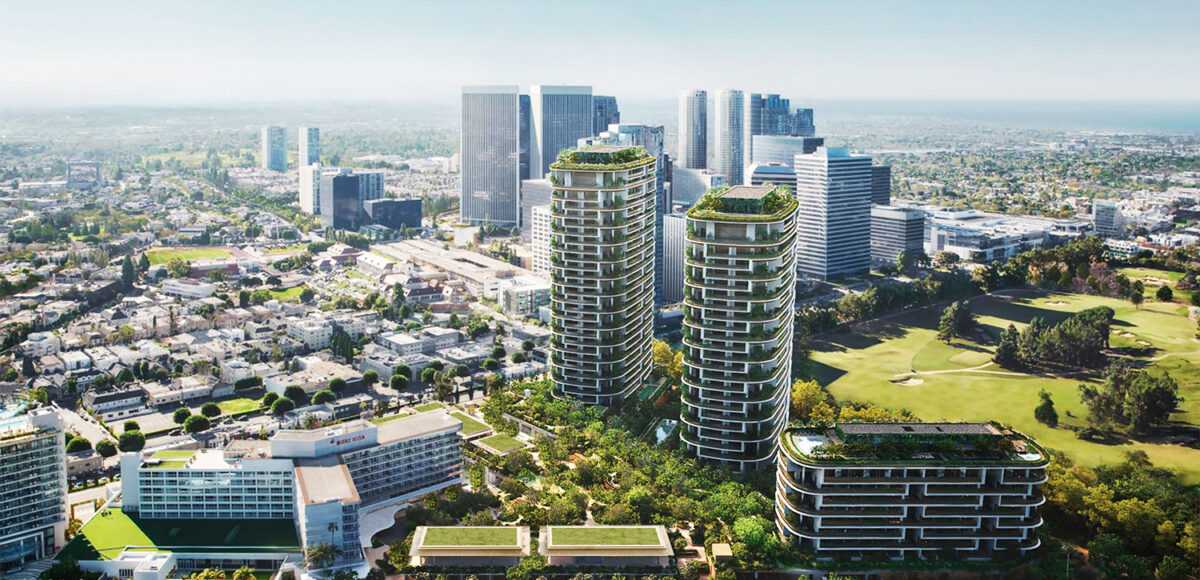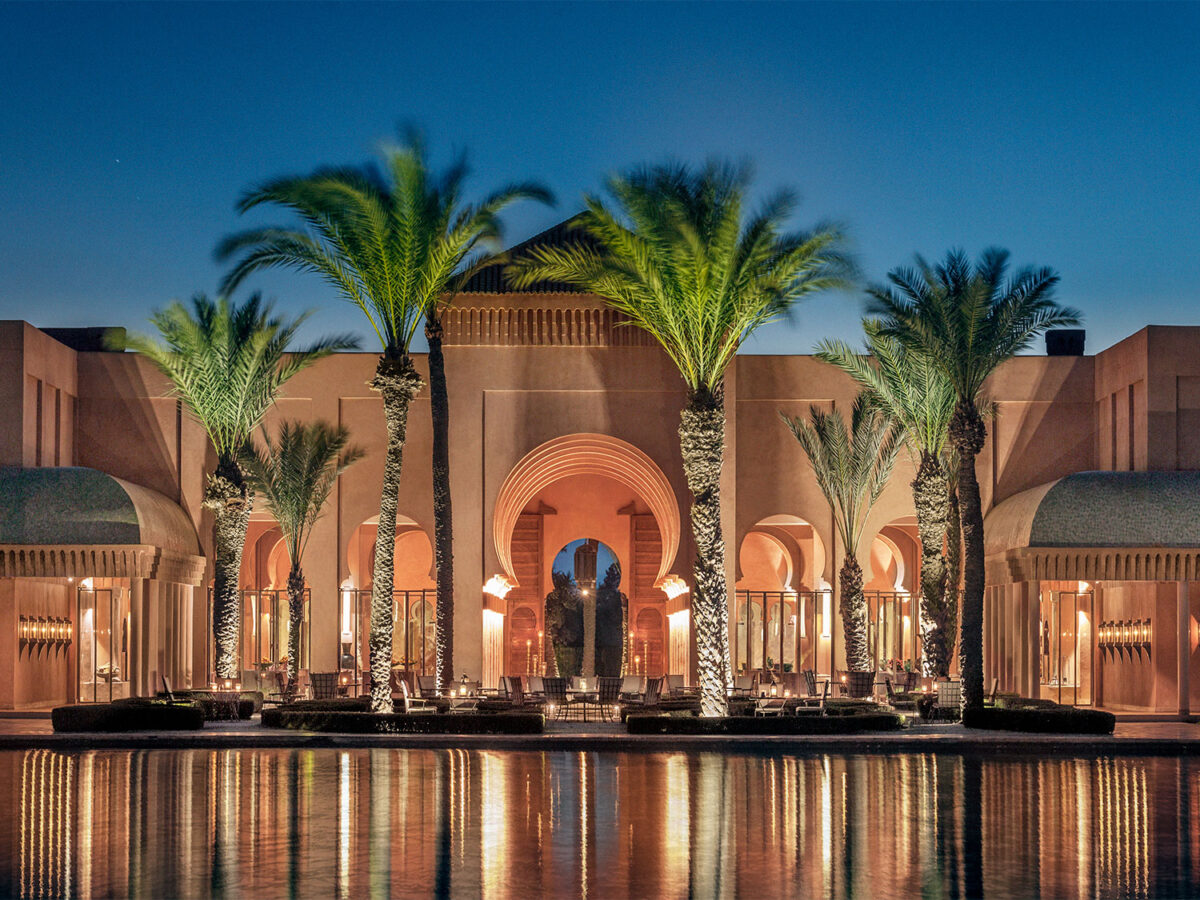True luxury is sustainable. From eco-friendly options in beauty aisles and high-fashion runways to the latest electric vehicle showrooms, now more than ever, it’s easier to do your part for the environment in style. Here in Beverly Hills, sustainability goes a step further with the latest crop of building projects that will revolutionize the spaces where you live, shop, dine and work.
Take the super-luxe One Beverly Hills, a mixed-use, high-end development designed to exceed California’s own ambitious sustainability goals. The Beverly Hilton and the Waldorf Astoria Beverly Hills received major energy-saving upgrades propelling both properties to the forefront of sustainable hospitality. The Darrow Office Building, designed by master architect John Lautner, will become a high-tech case study of adaptive reuse. And offices at 9000 Wilshire Blvd. and 433 N. Camden Drive recently underwent multimillion-dollar efficiency overhauls to achieve the highest levels of Leadership in Energy and Environmental Design (LEED) certification possible.
By combining stunning architectural design with state-of-the-art green technologies, these developments demonstrate that luxury and sustainability (and preservation and progress) can go hand in hand. They’re the next generation of green buildings set to transform Beverly Hills into the city of the future.
Earlier this year, the jaw-dropping One Beverly Hills broke ground. The project is led by Cain International alongside OKO Group, and Alagem Capital remains a committed partner. With a master plan designed by architecture firm Foster + Partners, the development will set a new standard for future sustainable developments in Beverly Hills and beyond.
Helming the firm is world-renowned British architect, Norman Foster, an English lord best known for his sea cucumber-shaped tower in London, colloquially referred to as The Gherkin. For One Beverly Hills, he brought his future-looking touch to the designs, but behind the opulent facade, is a complex maze of precious resource-saving systems. “The project also aims to integrate various technologies to significantly reduce emissions and energy use,” Lord Foster told the Courier.
Renderings for the development show a sprawling 17.5-acre site with new Aman branded and operated properties (designed by Kerry Hill Architects) including a pair of 28-story residential towers, a 10-story, 78-suite luxury hotel, a private clubhouse and a fine dining restaurant.
Each structure will use a central geothermal system, harnessing the Earth’s constant soil temperature to efficiently create heat and hot water, and reject heat for cooling without the use of gas. A chilled water thermal energy storage system will reduce the number of cooling towers needed, saving millions of gallons of water annually.
Along with a solar panel array and battery storage, the buildings will be outfitted with a high-tech electrical system that will allow them to maximize imported electricity in real-time intervals when grid generation is composed of renewable energy sources.
What promises to be one of the most breathtaking elements of One Beverly Hills is the 10 acres of botanical gardens and open space that will surround it. Thousands of new plantings of native plants, trees and shrubs will transform the Wilshire gateway—a total of 8.5 acres of carbon dioxide-absorbing parkland, with 4.5 acres publicly accessible. Global design collective RIOS, with its founding partner Mark Rios leading the team, was tapped to oversee the design.
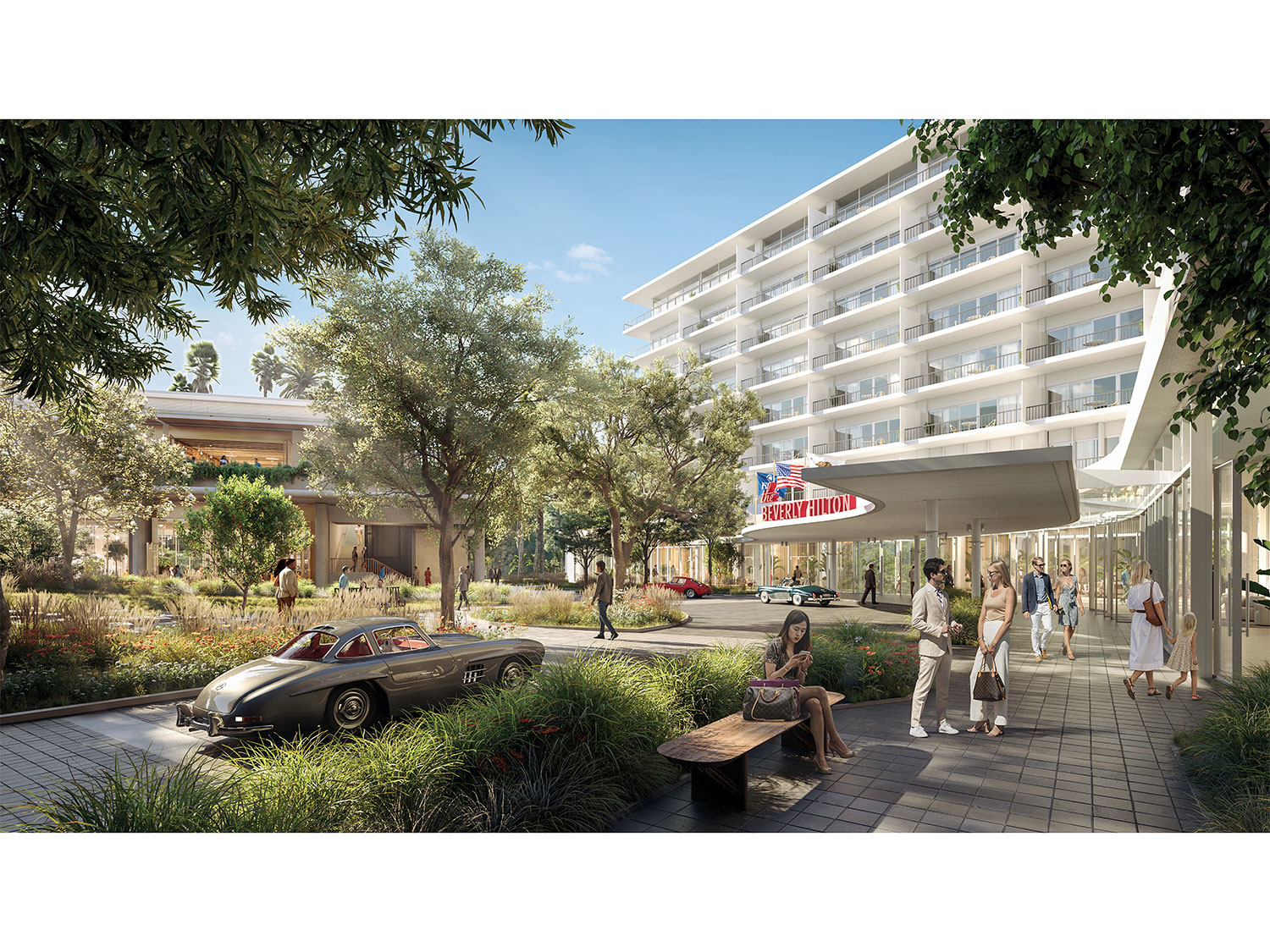
Rendering courtesy of Foster + Partners
“Foster + Partners’ idea to cover the entire site with a green blanket was brilliant,” said Rios. “It fulfills the overall vision of Beverly Hills to be a ‘garden city.’ We hope to make that dream a reality by providing an authentic ‘California landscape experience’ to enable everyone to learn about and appreciate the natural beauty of our place in Southern California.”
Astoundingly, the extensive landscape will be 100% water sustainable. Stormwater and greywater generated from condensation inside residential towers and cooling towers will be collected onsite and stored in cisterns and recycled back into the landscape.
In addition, “The master plan design encourages multimodal transportation options, promoting walking, cycling and the use of alternative transport modes, including electric vehicle charging facilities,” Lord Foster told the Courier. “With flora and fauna returning to the site, One Beverly Hills will establish a new model for sustainable master planning in the region, with a flavor that is distinctly Californian.”
Part of the master plan for One Beverly Hills integrates the existing Beverly Hilton and Waldorf Astoria Beverly Hills into the unified site through cohesive landscaping. Both hotels received a significant upgrade to their heating and cooling systems, which typically account for more than 70% of a hotel’s power consumption.
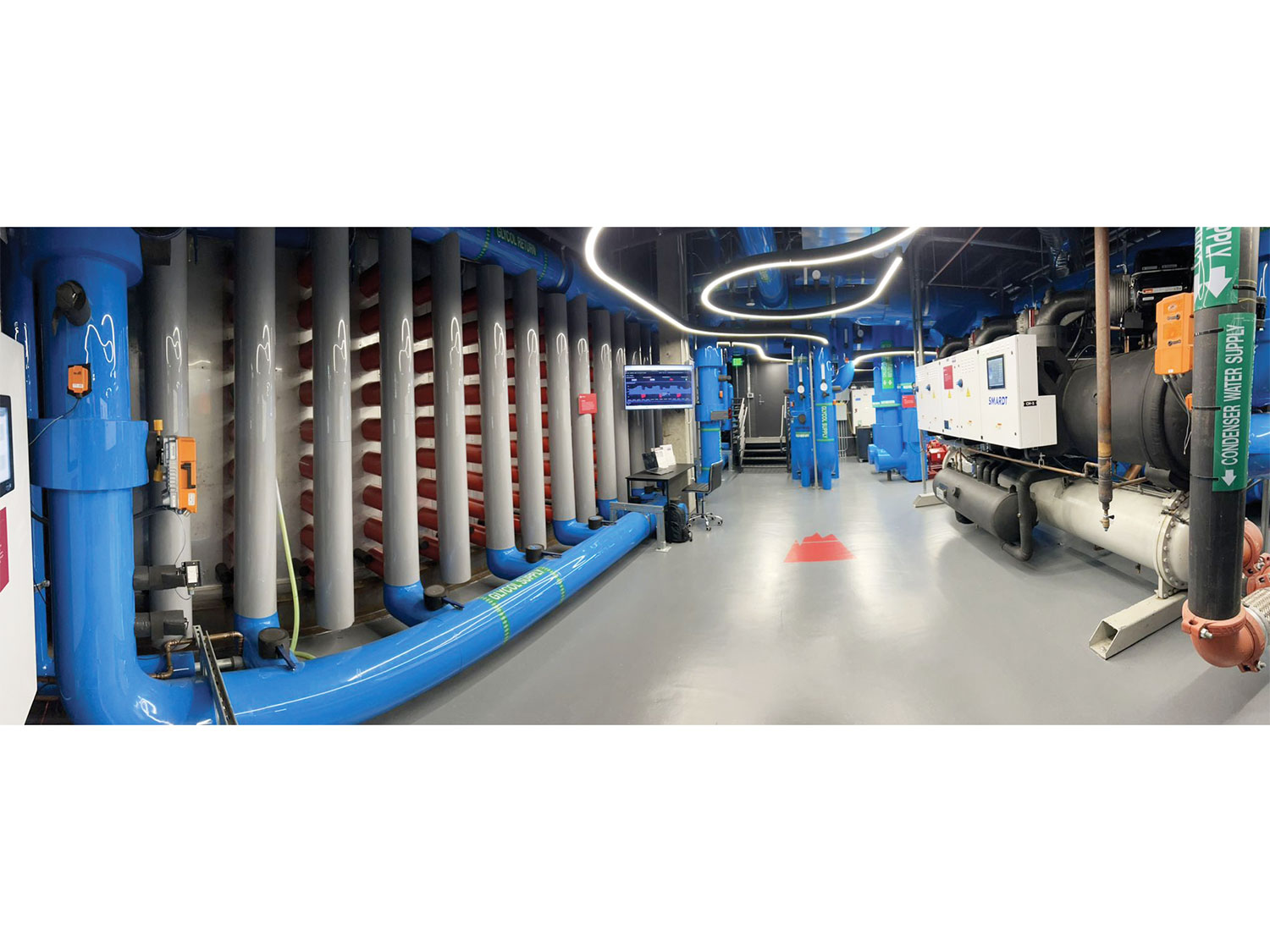
photo courtesy of Nostromo
Recently, a 1.4 megawatt-hour energy storage system from Nostromo Energy was installed inside The Beverly Hilton and also serves the adjacent Waldorf Astoria Beverly Hills. The Israeli-based company’s patented IceBrick technology uses power from the grid when renewable energy levels are high to freeze water into ice. In the late afternoon and evening, when power demand reaches its highest levels, the ice is used for cooling instead of drawing fossil-based energy from the grid. The IceBricks chill the buildings for less than 50% of current cooling costs and reduce carbon emissions by 150-200 metric tons annually. This translates to more than 5,000 metric tons reduced throughout the system’s lifetime.
“We are proud to partner with Nostromo to bring cutting-edge green technology to The Beverly Hilton,” said David Ecija, General Manager of The Beverly Hilton. “This partnership is an extension of our history as a forward-thinking property, focused on the future and what is good for our community.”
In addition to its energy-saving efforts, the Waldorf Astoria Beverly Hills also recently invested in a high-tech greywater system by Epic Cleantec. Water collected from sinks, showers and washing machines is captured, rigorously filtered and disinfected before it’s reintroduced back into the building for non-potable uses such as landscaping or toilets, which account for a quarter of total water usage. The new system reduces the hotel’s water consumption by more than 90%.
“We are dedicated to creating a healthier environment for both our guests and our employees. The Epic Cleantec greywater system is yet another way that we are putting sustainability at the forefront of all we do,” said Antonio Bugarin, General Manager at Waldorf Astoria Beverly Hills.
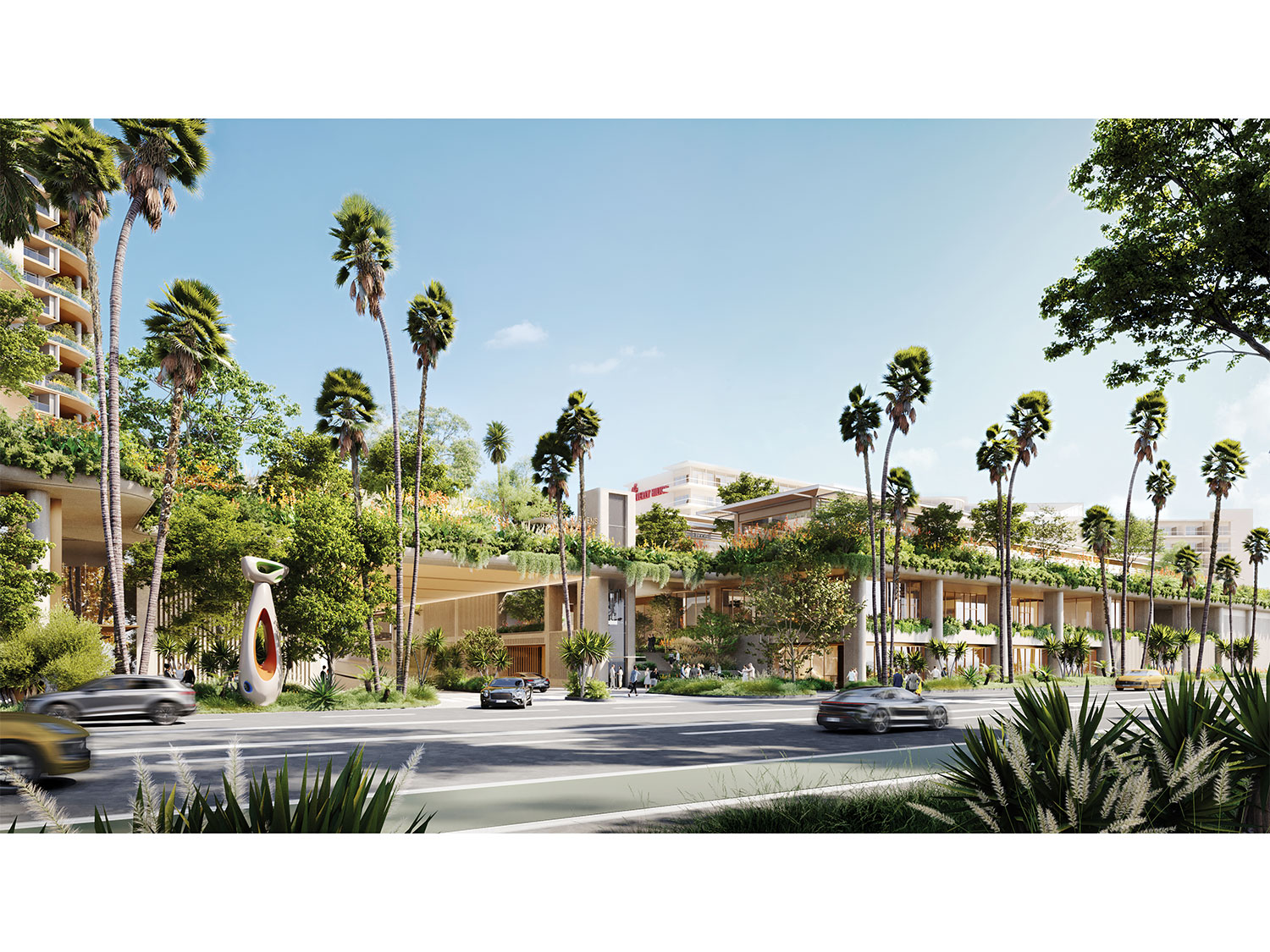
rendering courtesy of Foster + Partners
Over the years, the Lautner building at 9884 S. Santa Monica Blvd., originally designed for John Darrow in 1946, was home to various tenants—a nail salon, medical offices and a drug store. But under its current owner, the Angeleno Group, a late-stage venture capital and investment firm focusing on climate change-related technologies, it’s set to become a stunning state-of-the-art sustainable model of adaptive reuse.
The Darrow Office Building’s brick facade with its iconic louvered shutters will remain virtually unchanged, save for the reinstatement of a few ornamental details that had been removed over time, and of course, the addition of the hotly contested third floor, a glass-walled, floating rooftop patio designed by acclaimed architect, Hagy Belzberg, who won an award for his trailblazing design of the Holocaust Museum LA.
Preserving this historical architectural gem while simultaneously showcasing futuristic tech was the goal. Putting Beverly Hills on the map as the destination for sustainable tech became a mission for Angeleno Group’s Co-Founder Yaniv Tepper.
“Some years ago, when I was asked where to find the most interesting green building technologies in Los Angeles, Beverly Hills wasn’t high on that list. That’s not what people go there for, but I grew up in Beverly Hills,” Tepper explained. “I went to Beverly Vista and Beverly High. And for me to have to go see green technologies down near the Port of Long Beach or in Santa Monica, it pained me.” In 2021, the city of Santa Monica became the first local government in the nation distinguished with a Platinum certification under the LEED for Cities program. It was an honor that Tepper felt should belong to the city of Beverly Hills. “I wanted the city of Beverly Hills to be an example of these state-of-the-art technologies,” he said.
To that end, every facet of the company’s new headquarters, from the electric outlets to the windows, will be outfitted with cutting-edge, energy-saving and efficiency advancements, many from the group’s portfolio.
Tepper plans to install what he calls “some pretty frontier stuff,” used mainly in residential applications. One example is the latest in intelligent circuitry from the tech company SPAN. It enables homeowners to choose their power source (the grid, solar or battery storage) and divert energy to high-use outlets where it’s needed most—all from an app on their phone. Visitors to the group’s new headquarters will be able to view the building’s energy consumption in real time via a giant SPAN screen in the building’s lobby.
Revolutionary active lighting, which automatically adjusts supplied light levels and power usage to reduce waste, will be installed throughout the building. Solar roof panels will be maxed out, and the team is also looking into groundbreaking photovoltaic glass windows to shore up additional sun power. These look like ordinary windows, but cells hidden in the glazing convert sunlight into renewable energy, which can be banked and used when needed. In addition, four solar-powered electric vehicle charging stations will be installed onsite so employees, clients and visitors can charge their EVs during daylight office hours without straining the grid.
“We’re looking forward to this being the place where when people visit us, they’ll be able to see, touch and understand all these different green building technologies,” said Tepper. “They’re practical, they’re real, and they’re here.”
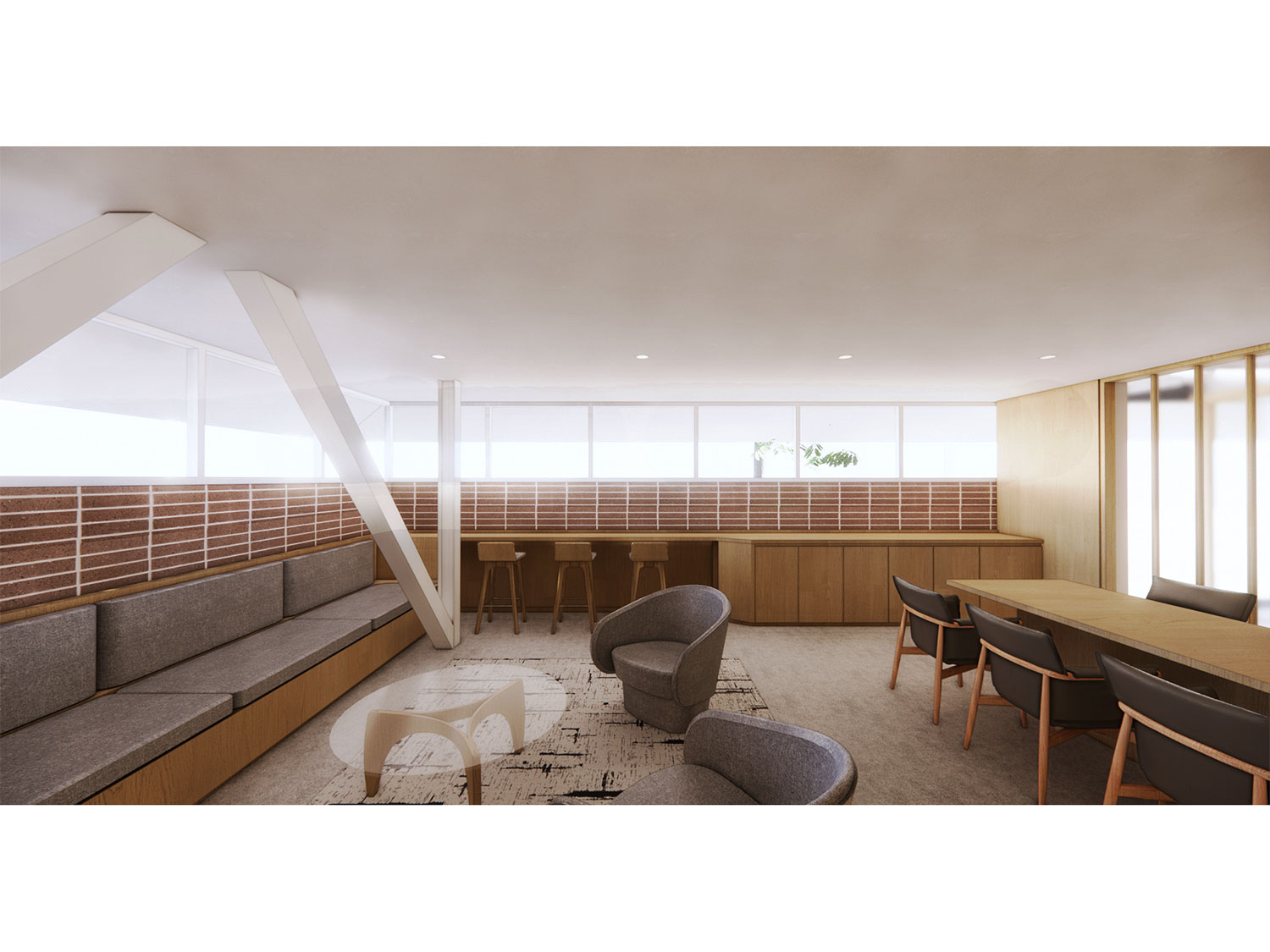
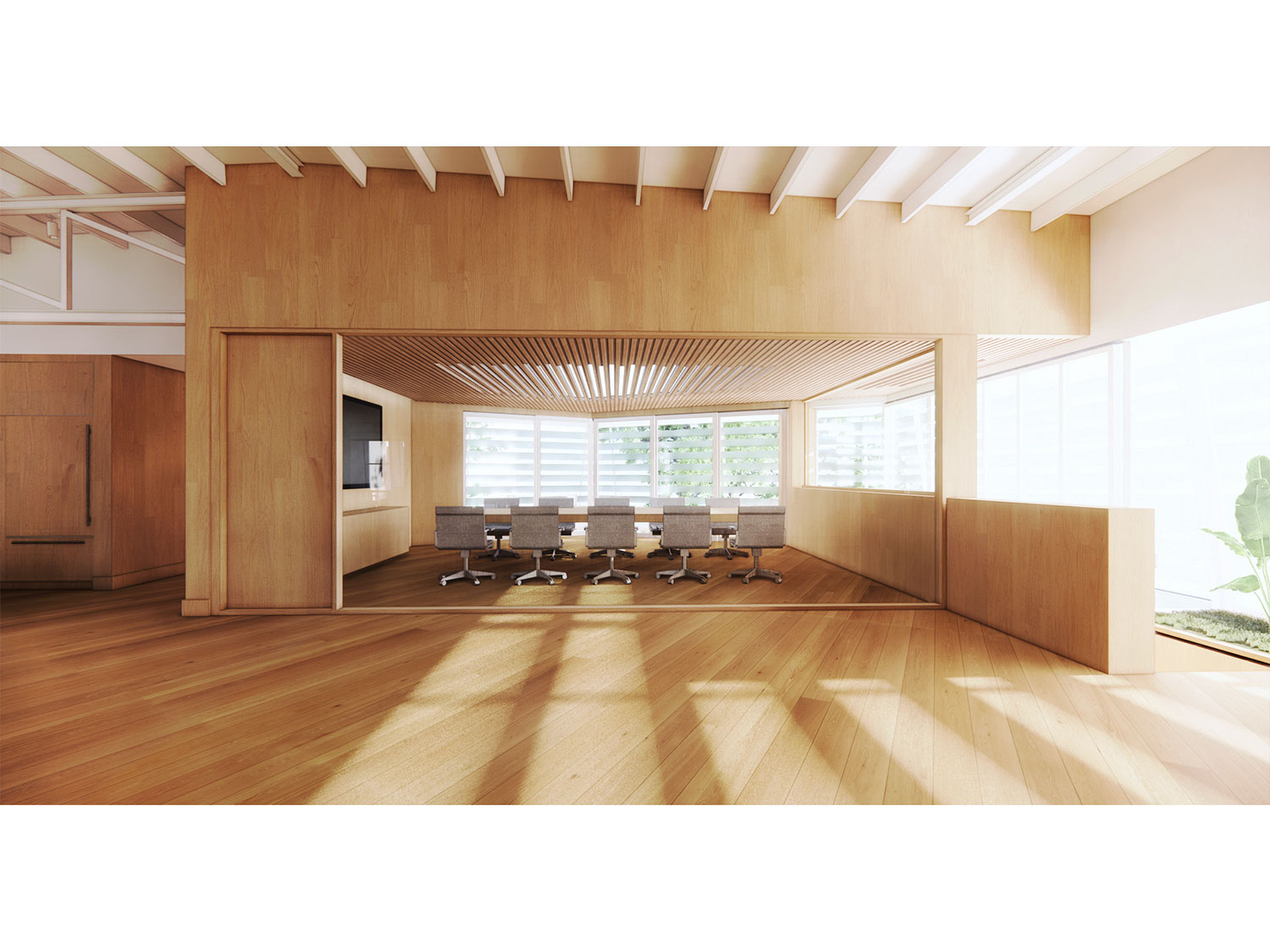
Renderings Courtesy of BA Collective
When it comes to working spaces, the city scores on the higher end of the national average with 27 LEED-awarded commercial buildings, according to recent statistics provided by the United States Green Building Council (USGBC), which administers the complex LEED ranking system, the standard in evaluating sustainable building worldwide. “Because of the high number of luxury brands and high-end offices, Beverly Hills is a unique market for LEED and green buildings,” said Stephanie Gabriel, USGBC Pacific Regional Director. “These companies and brands are embracing LEED certification as part of their sustainability strategy and to enhance customer experience and satisfaction.”
Gabriel considers the remodel of the 46,000-square-foot office building at 9000 Wilshire Blvd. a stand-out example in Beverly Hills. “It implements green and sustainable strategies like water reduction and solar power generation while focusing on health and wellness with bicycle parking service and lots of natural light. This is why the project attained Platinum certification, the highest level a project can achieve.”
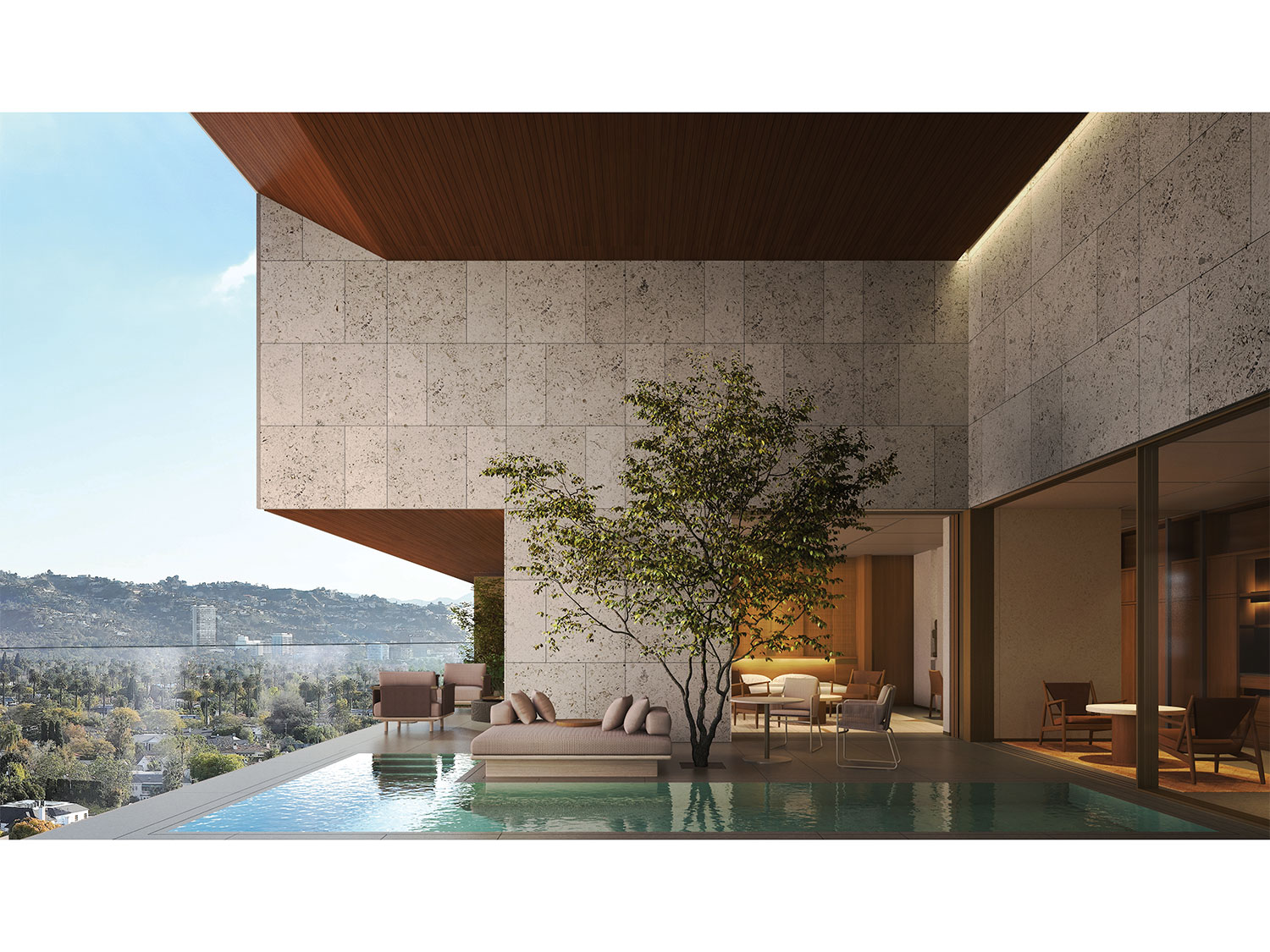
Rendering courtesy of Kerry Hill Architects
Another existing building deserving special mention, according to Gabriel, is the property at 433 N. Camden Drive. When StarPoint Properties, LLC bought the 12-story commercial office tower in 2018, it was the most expensive office building ever purchased in Beverly Hills. At a purchase price of $193 million, it still holds the record. The building recently earned its LEED Gold status after making a few small sustainability-related improvements. Simply replacing fluorescents and retrofitting lighting fixtures with LED bulbs throughout resulted in one of the most extensive cost and energy-related savings measures. StarPoint also received high marks for implementing a robust recycling program and reducing single-use plastics, such as bottles and utensils, across the entire building.
“From an owner’s standpoint, investing in green renovations positions a building for long-term success. These green renovations optimize building maintenance, preserving the look and integrity of a building for years to come,” said Paul Daneshrad, Founder and CEO of StarPoint Properties. “Today, sustainability is expected; it’s part of our lifestyle. We believe that incorporating green elements into every project makes our environment healthier, and everyone—and every building—needs to contribute.”
With this spate of new and updated green buildings, Beverly Hills is earning its place as a beacon of sustainability, a distinction rightly befitting this legendary destination.
“Today, sustainability is expected; it’s part of our lifestyle. We believe that incorporating green elements into every project makes our environment healthier, and everyone—and every building—needs to contribute.”
– Paul Daneshrad, Founder/CEO,
StarPoint Properties



